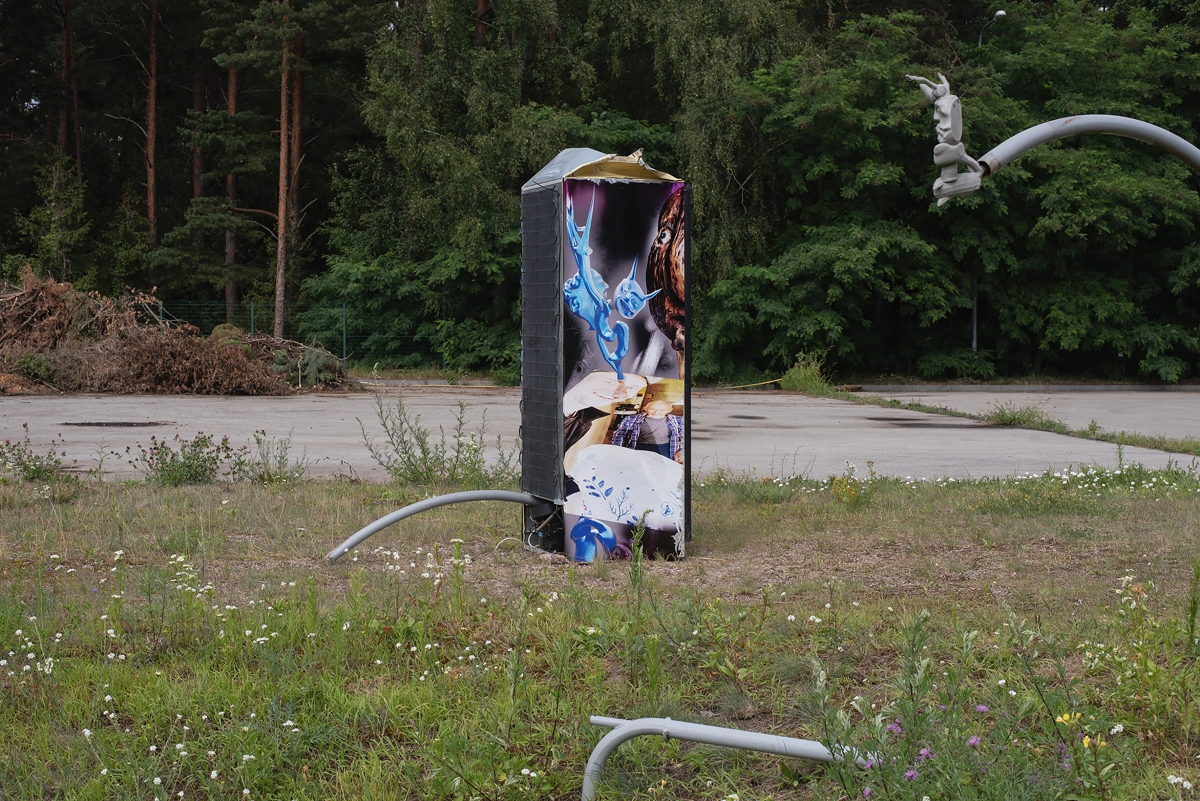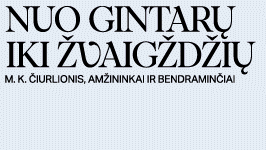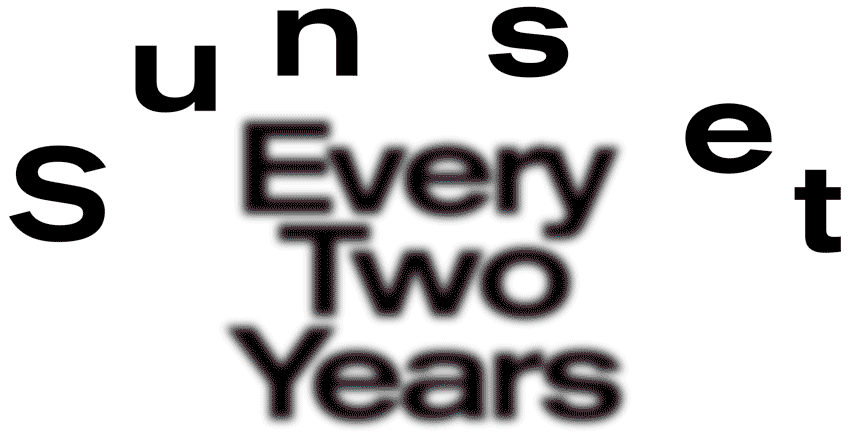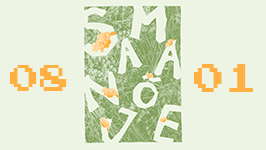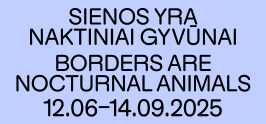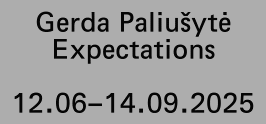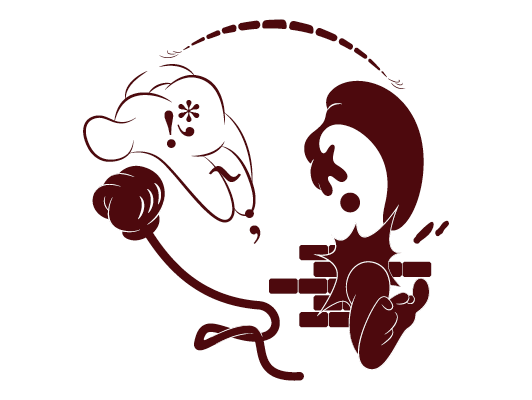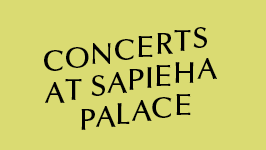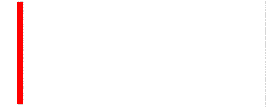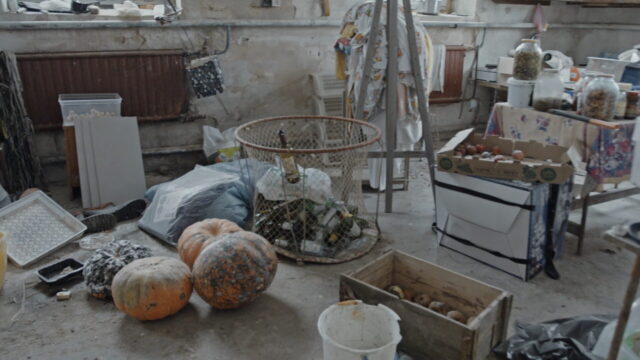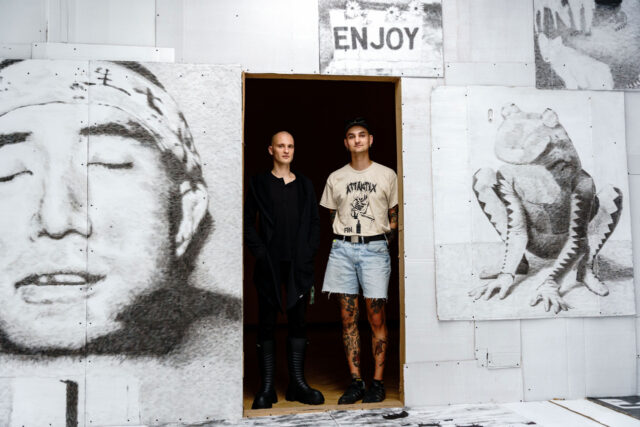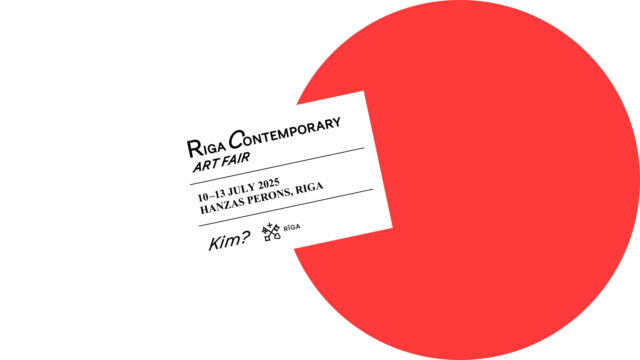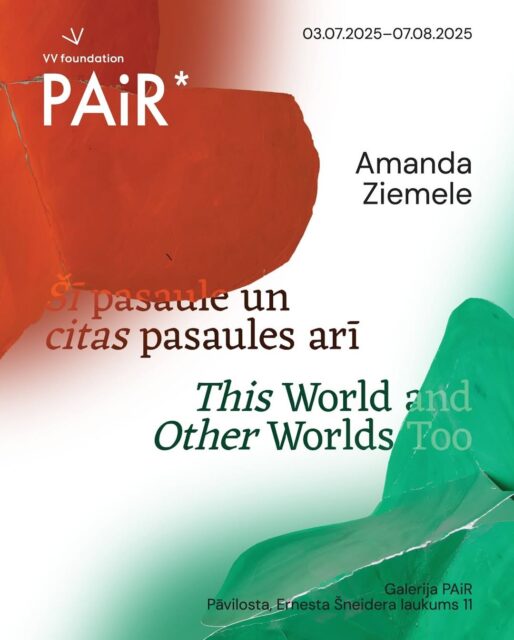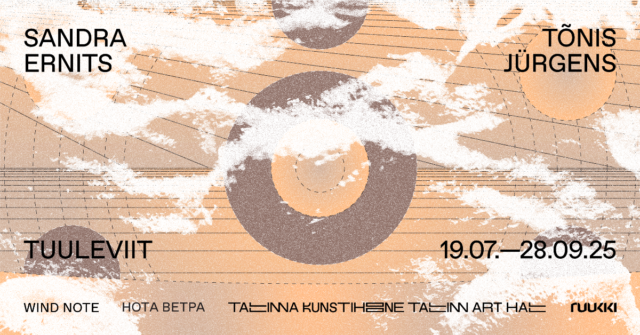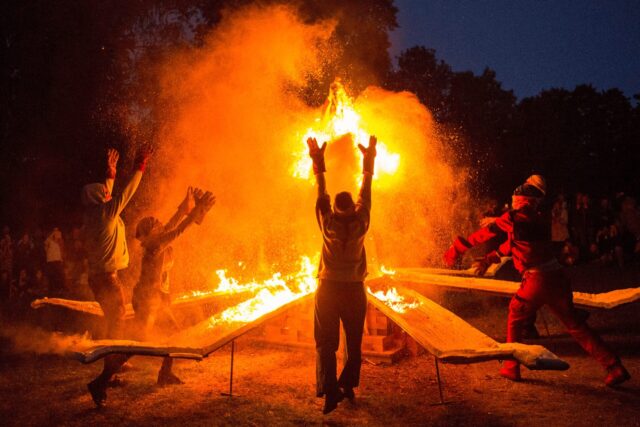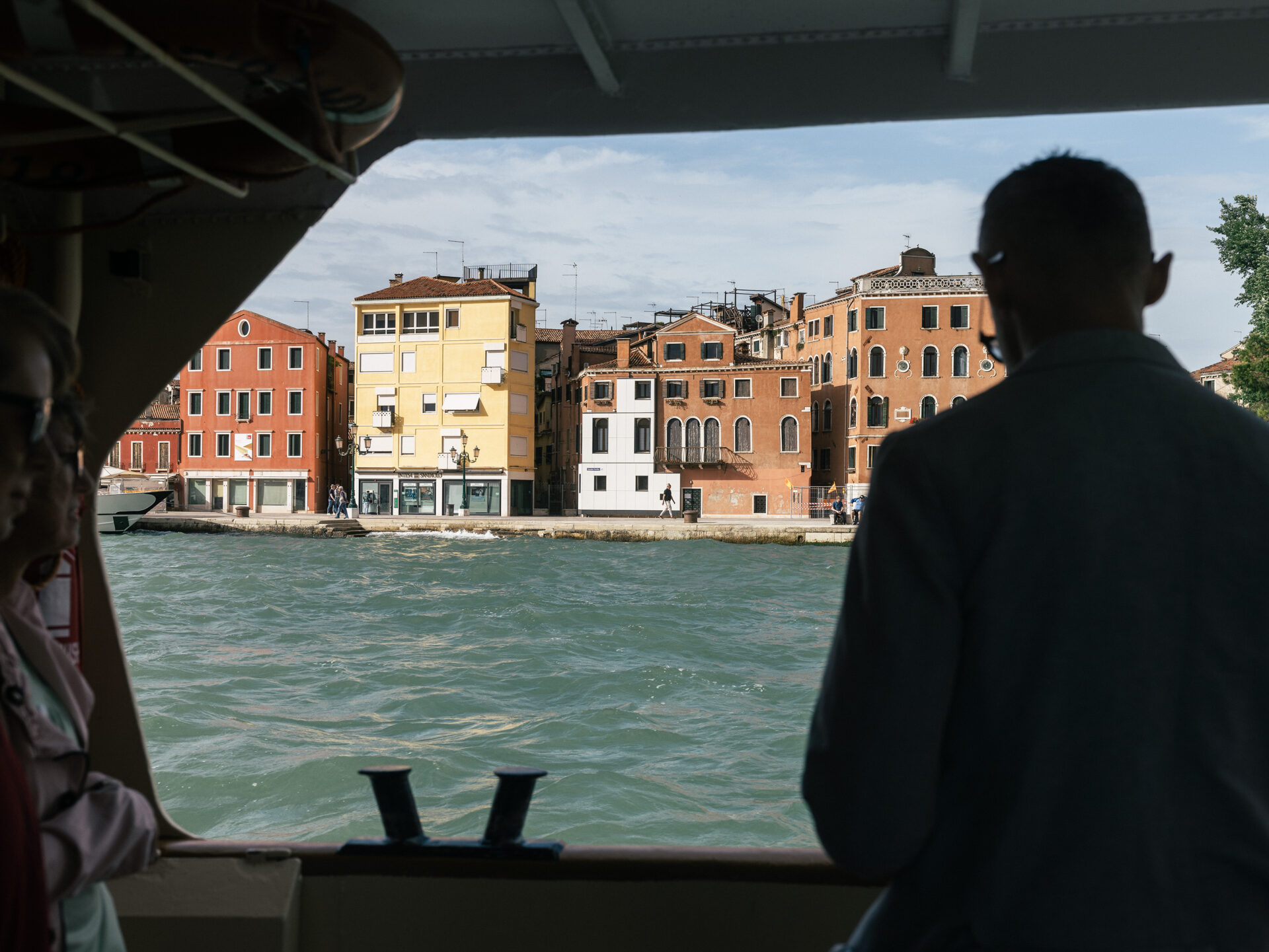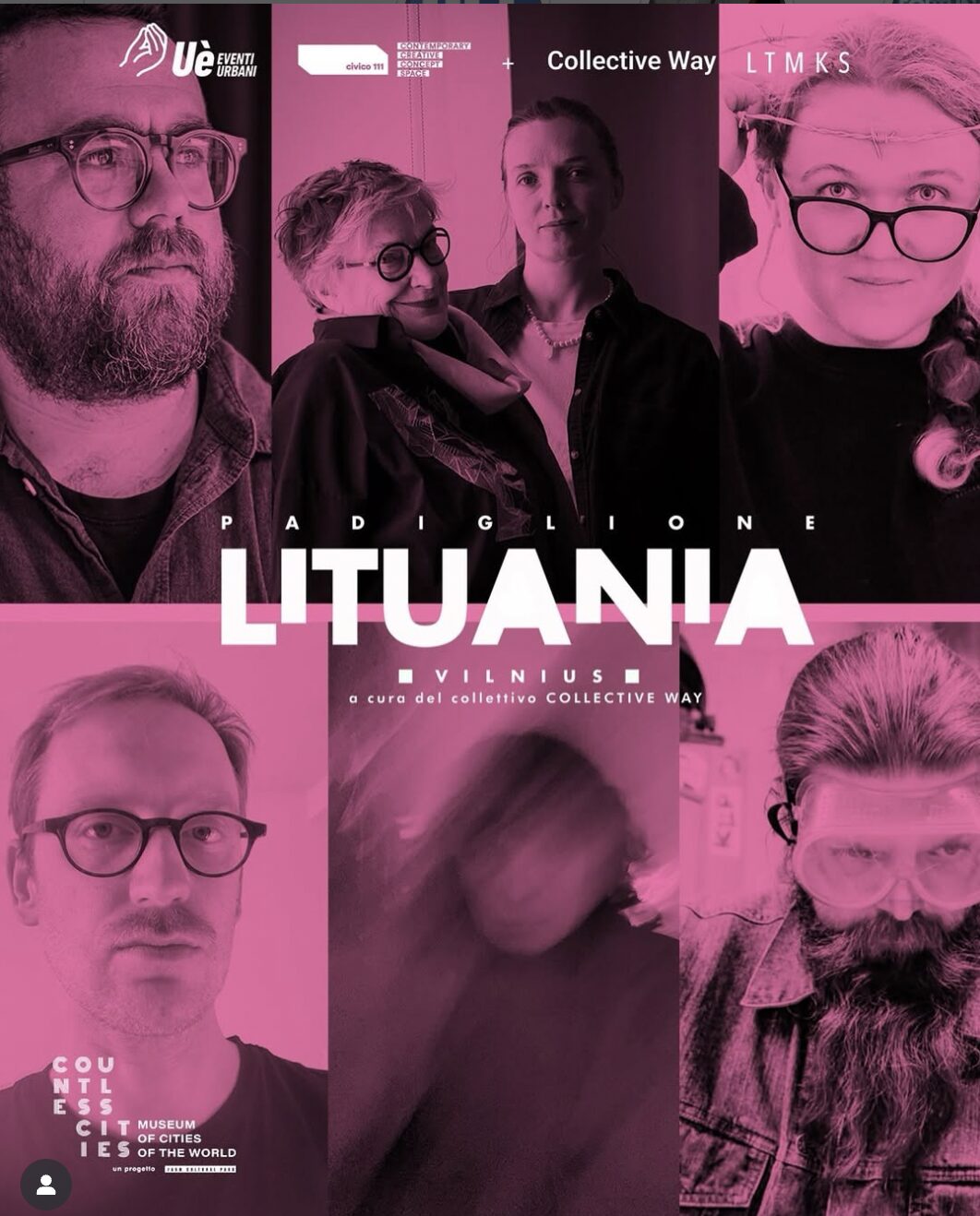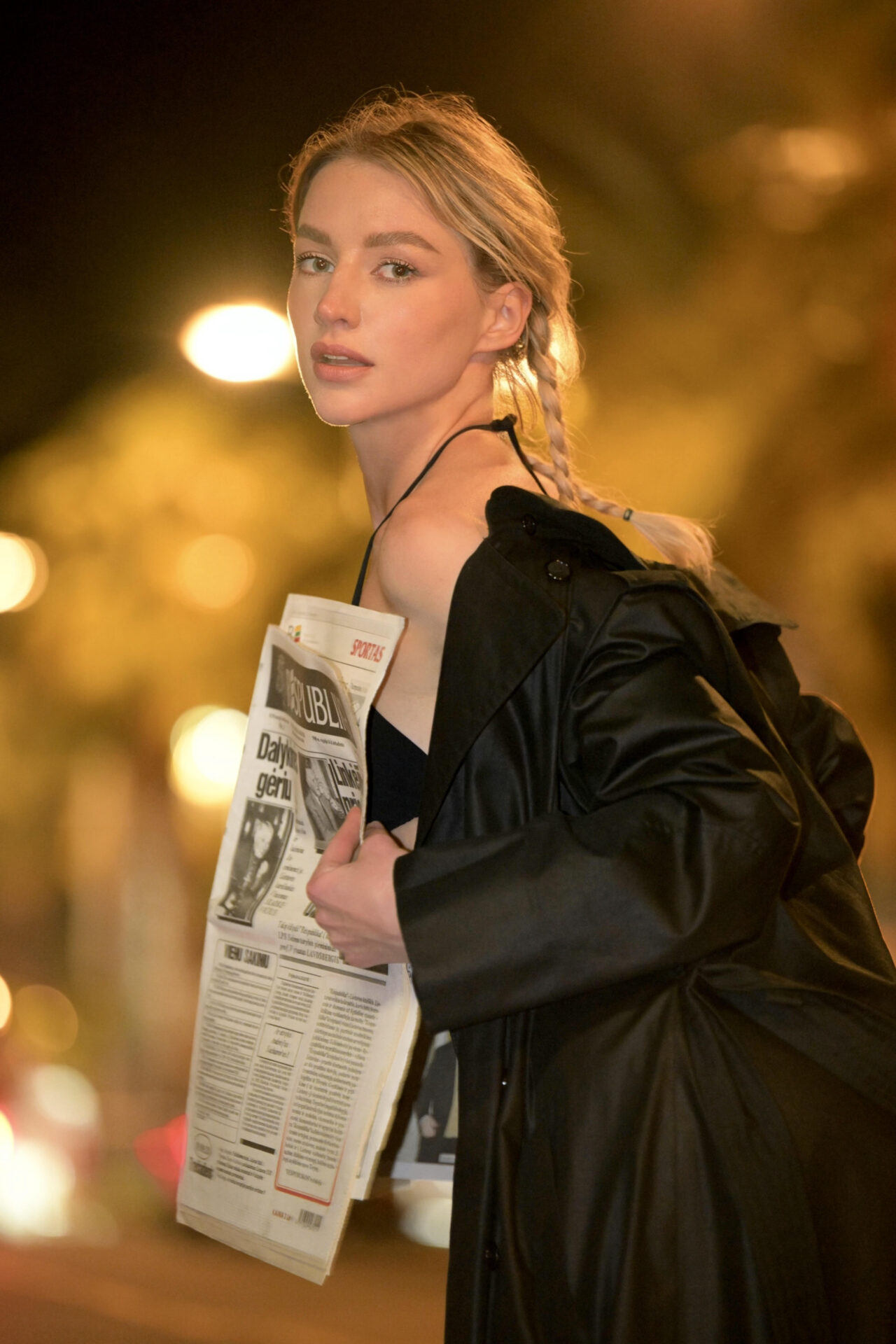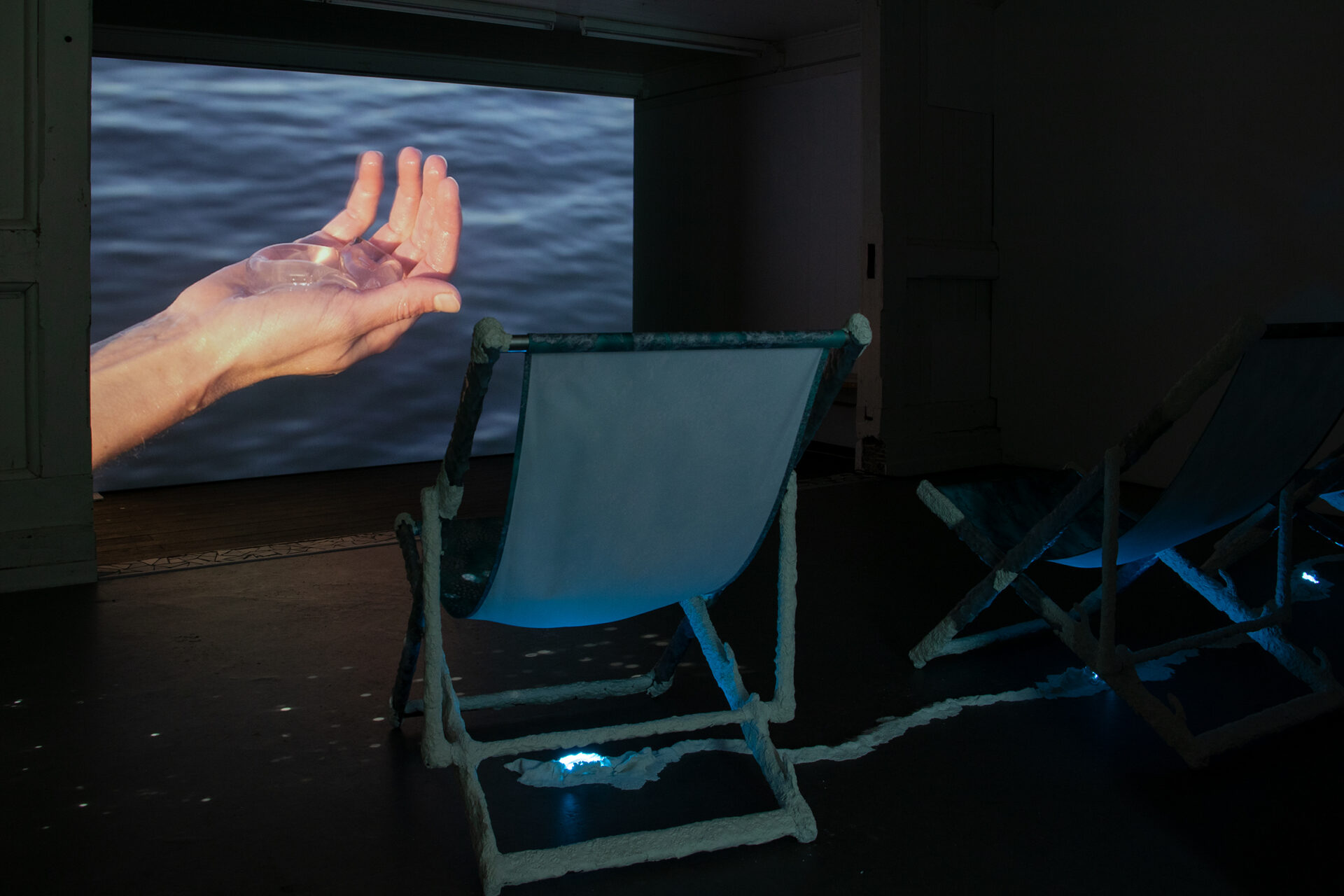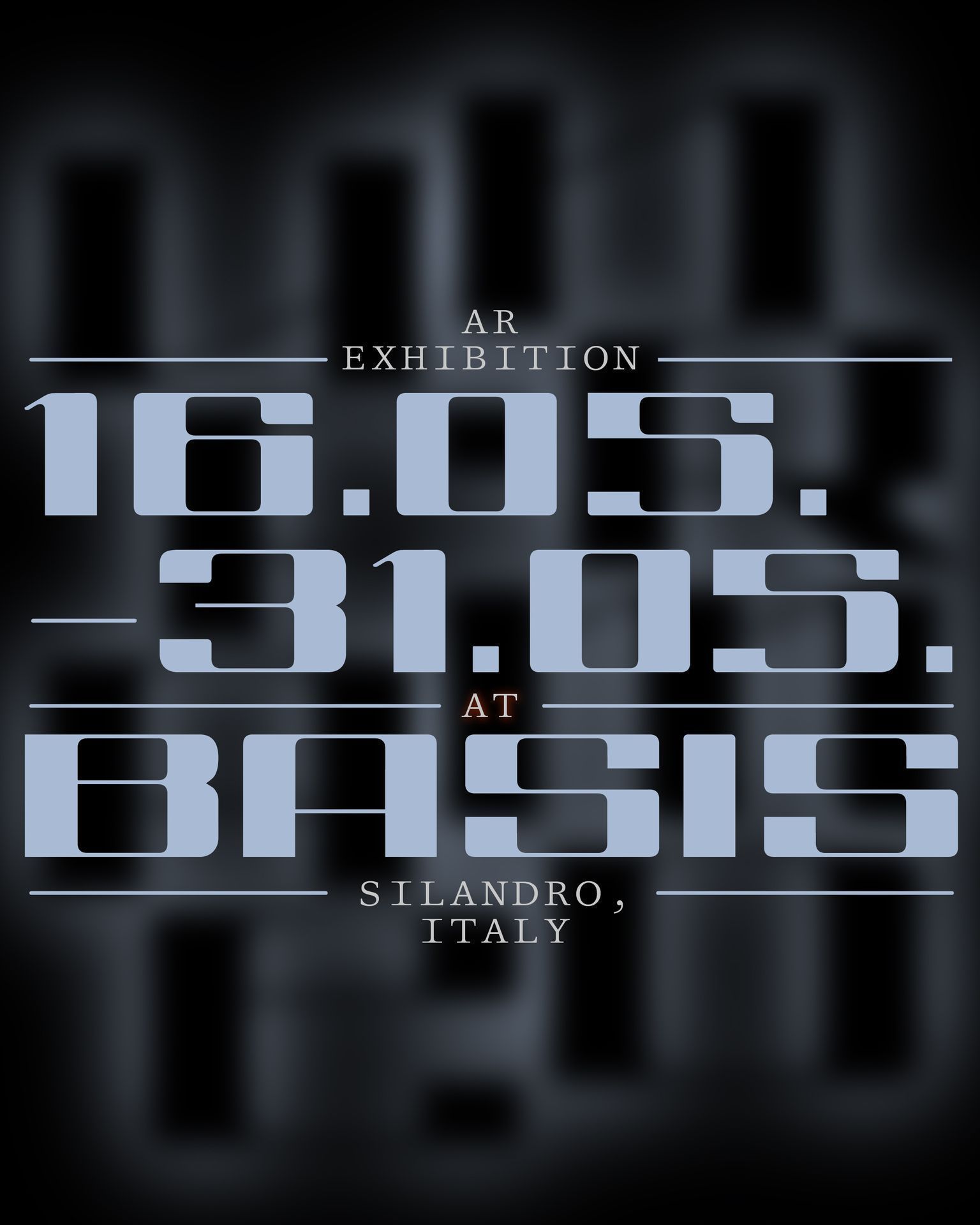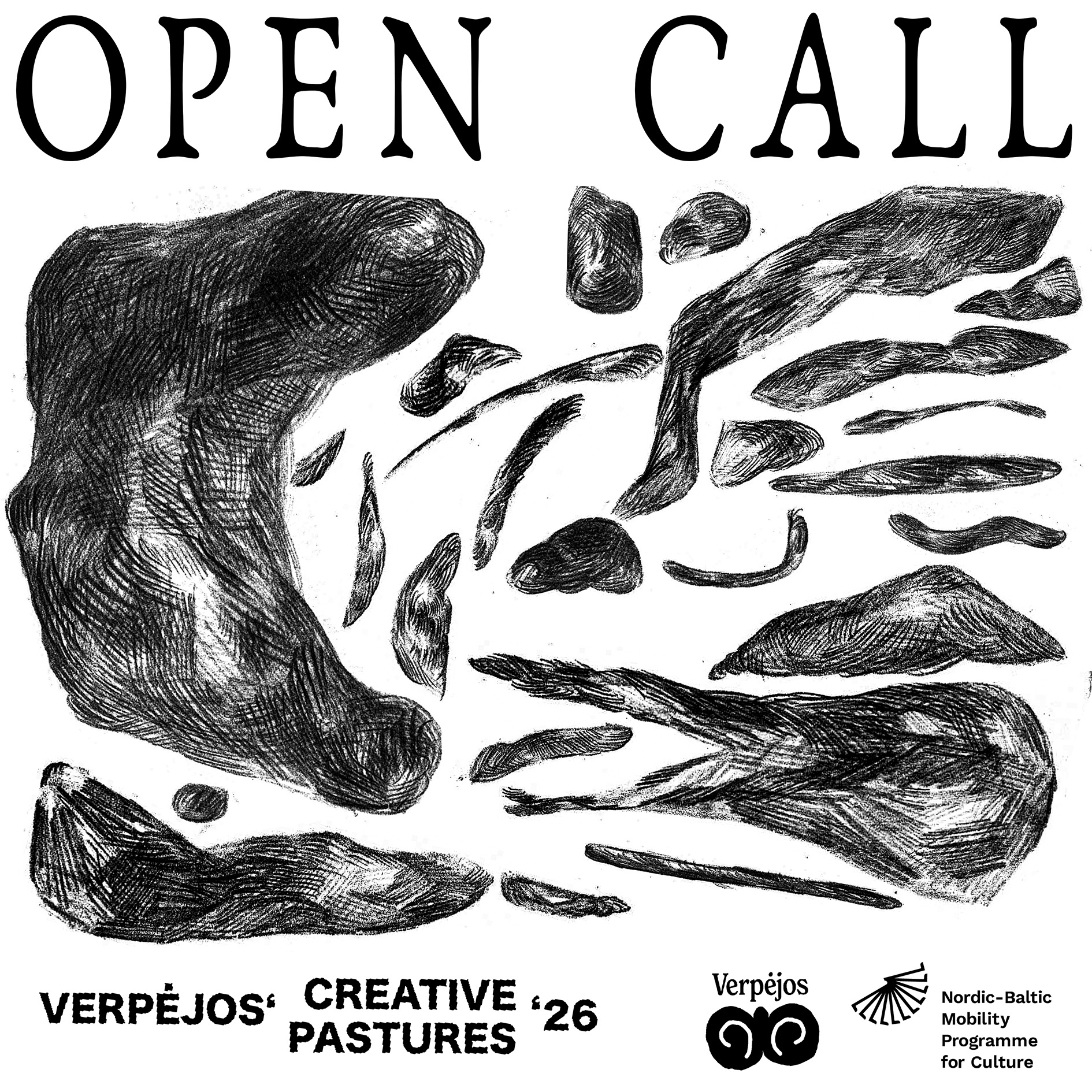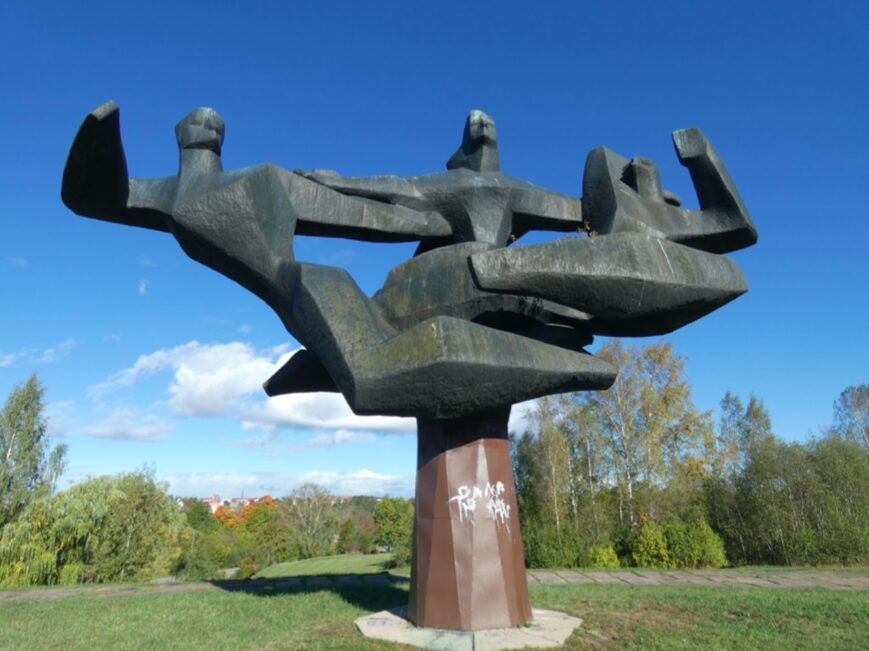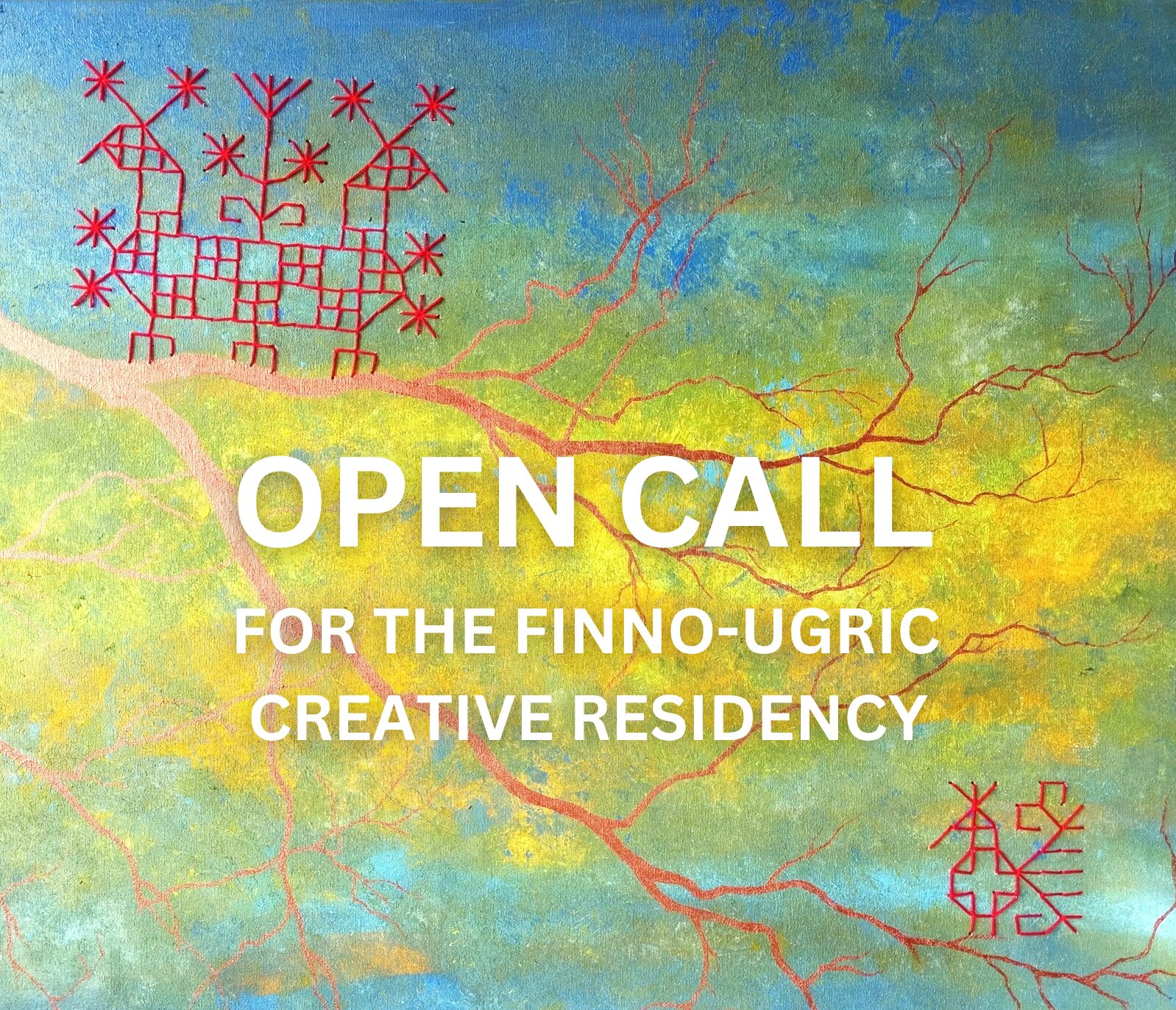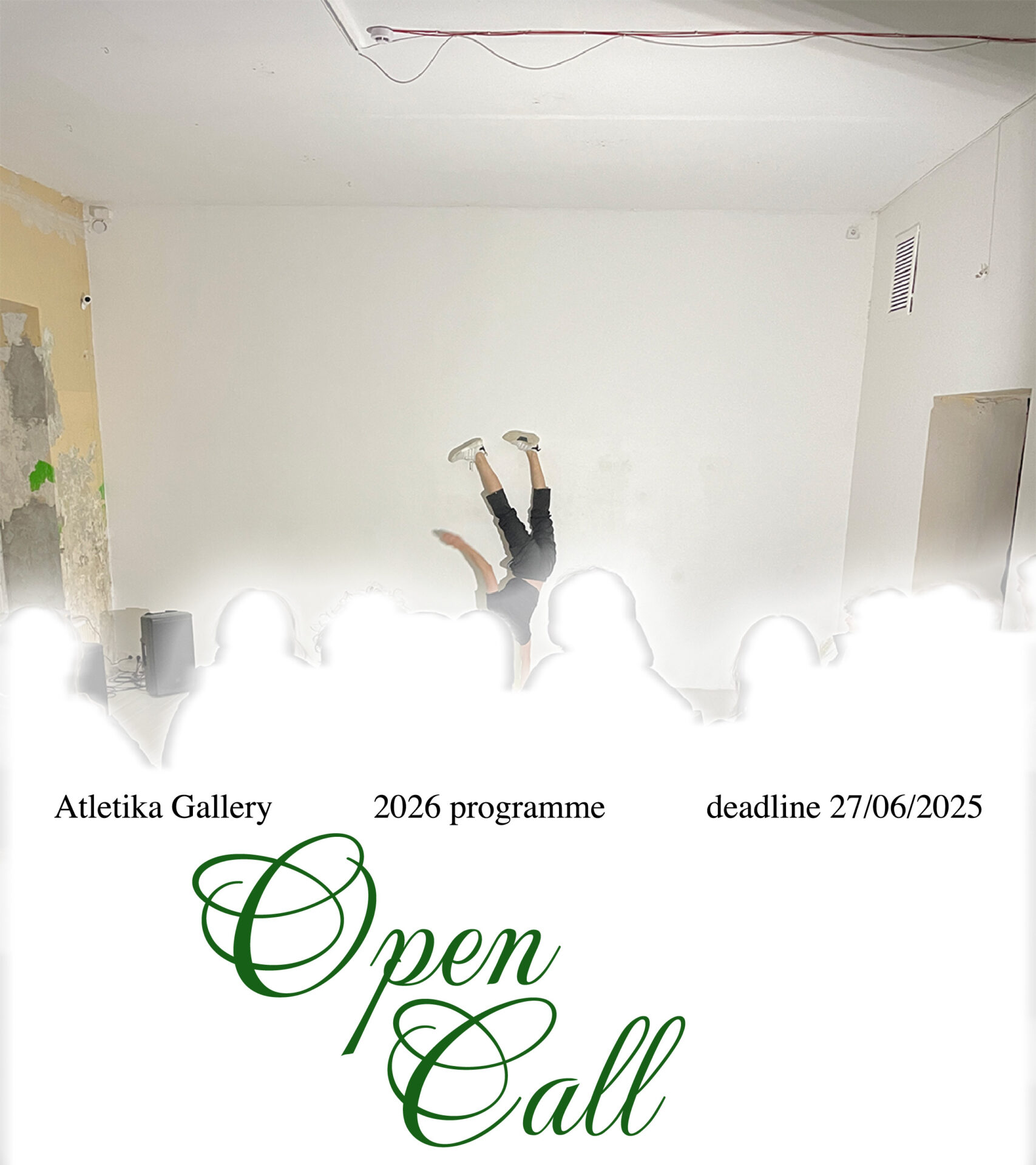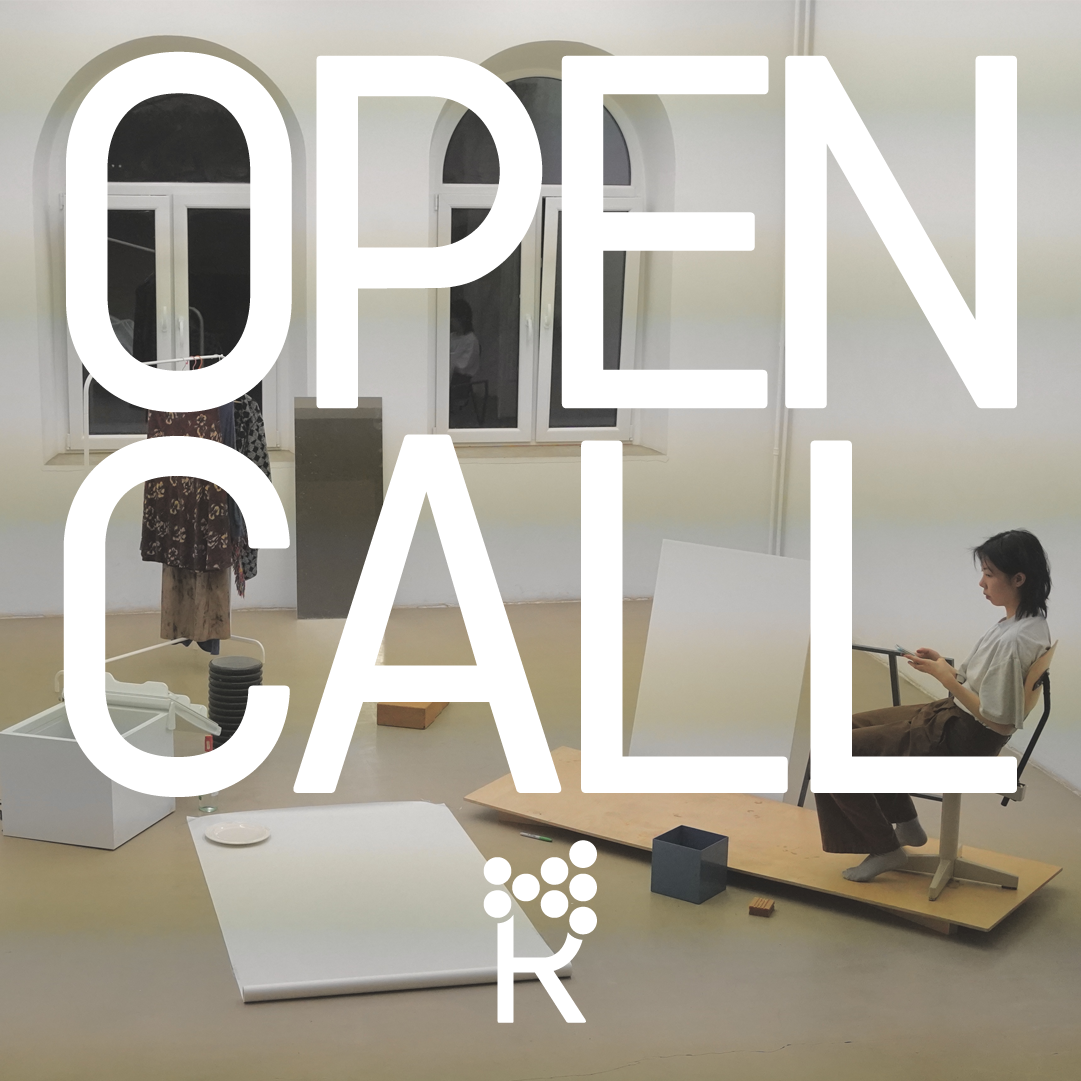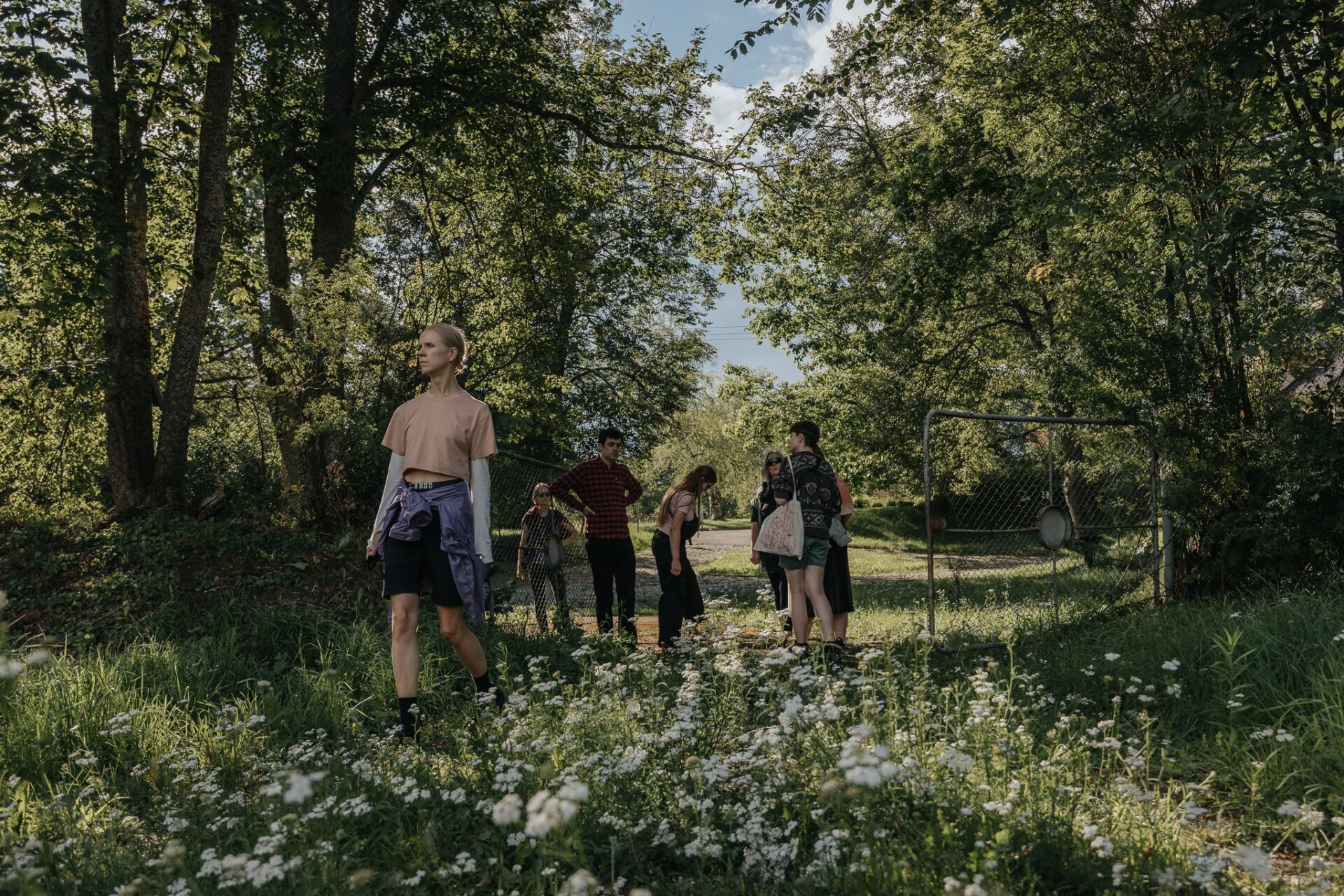‘One day, you will have someone in your life who is obsessed with you. Most likely it will be a dog.’ That’s the line the Instagram algorithm dropped to me with when I was scrolling because I couldn’t concentrate. I took it as a leash to start this article. I’m not sure where it will take me, but I know where it all started: when I began looking for signs and words, and writing them down on the first surfaces I came across.
On the morning of 21 July, I was obsessively checking all the weather forecast pages, trying to figure out what I needed to prepare for in Nida. It’s a kind of anxiety ritual, to get ahead of the winds so that the holiday plans don’t go to waste. In the exhibition curated by Anastasia Sosunova, situations of compulsive interest are advanced, and the title ‘Obsession’ not only dictates the theme, but also reflects the curator’s relationship with the artists and the works. It is very clear that Sosunova was obsessed with this exhibition in the preparations for it, and I suspect that this obsession is not letting go.
The exhibition connects two areas, the Nida Art Colony and the waste collection site in Neringa, which depend on movement. People circulate in one, objects in the other. Words turn into objects, promises into fulfilments, and exhibitions into photo-documentations and reviews that dive into the sea of information. The architecture of the exhibition, created in collaboration with the artist Laura Kaminskaitė, plays with the ‘hotel-like’ and communal function of the Nida Art Colony building. The recreational and sorting spaces, woven into a single thread, remind us of the problem of the sustainability of art, and at the same time disrupt the rituals of their movement.
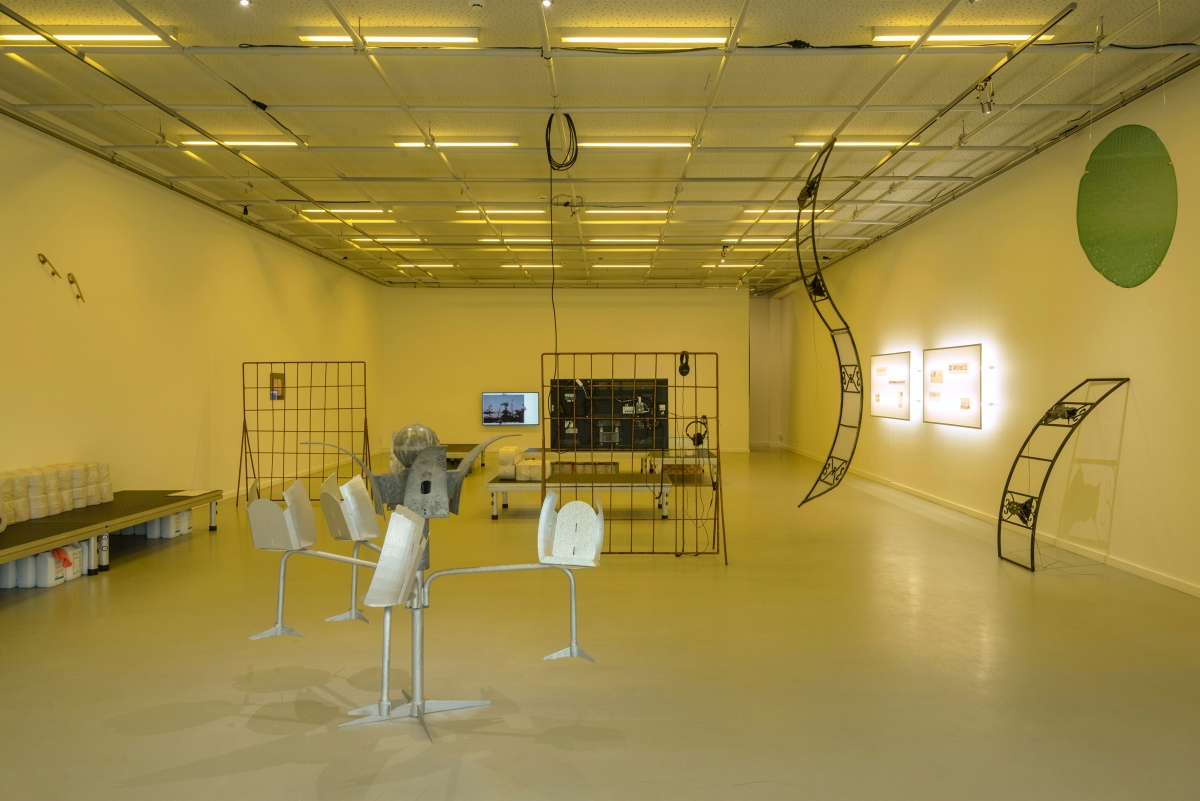
Exhibition view: Obsession, 2023, Nida Art Colony, Nida. Photo by Lukas Mykolaitis
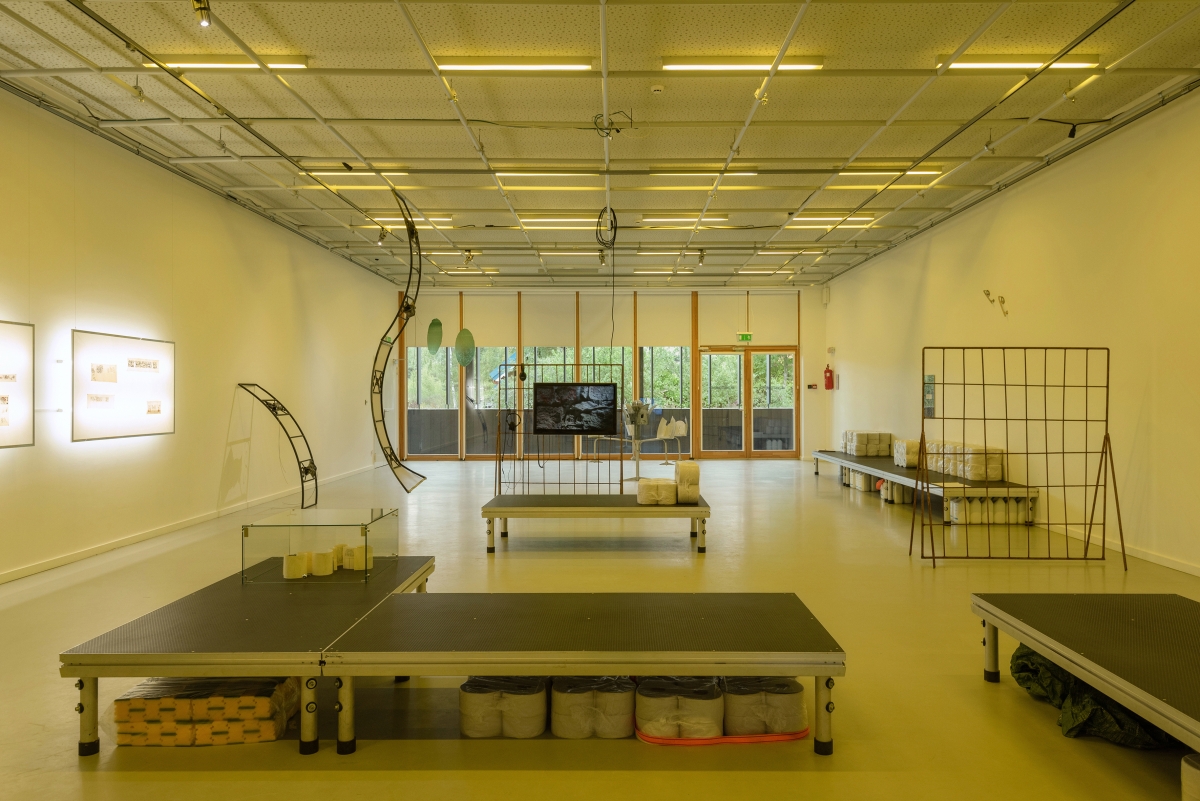
Exhibition view: Obsession, 2023, Nida Art Colony, Nida. Photo by Lukas Mykolaitis
Suddenly, music plays in one of the sorting containers, and a bus full of cultural workers pulls up to the waste collection site, 11 kilometres from Nida. They pour in, wearing yellow reflective vests (part of the duo Case’s work), and immediately feel at home, only a little afraid of ticks, which is why they don’t stray too far into the grass. It’s curious to find yourself in places that wait not for you but for your belongings, where there are more warning signs than inviting ones. There are objects in the site that are old wolves who know their ways and can be distinguished by their sun-faded backs. The works that snuggle up to them will, over the course of the exhibition, be covered by layers of experience: they will be hidden by the constantly arriving objects, and may even be able to see themselves in the mirrors passing by.
Neringa can be described as a centre of attraction for obsessions. Everybody has a role to play: you are a tourist, or a tourist who can’t stand other tourists, you are a worker who works here and looks forward to your days off, you are a burnt-out cultural worker obsessed with inexhaustible ideas, you are a local cat or a sunset that tourists take pictures of as if they are obsessed with you … These are responsible positions that constantly require living up to expectations. Thinking about the artists and the works in this exhibition, I put them in a kind of catalogue of obsessions, which I carried around in my head and in scribbled notes. Its boundaries are ghostly and soft, with no real names, only hints, open to interpretation.
It so happened that the opening weekend of ‘Obsession’ coincided with the Ant Bangos festival. For a few days, Nida’s Maxima was transformed into a hub whose emptying shelves reflected the festival’s craving for chewing gum and energy drinks. This shopping impression accompanied me to Lukas Danys’ Pakalnė Ketamine Clinic, which greeted those entering the exhibition space of the Nida Art Colony in the form of prints. The prints show the first ketamine clinic in Lithuania, of course only as a vision of the future dreamt up by Midjourney, but the description says that it is only a matter of time before the world’s successive clinics come to us too. For now, in Lithuania, ketamine is more of a party companion than a professional doctor of mood disorders. Catching the experiences alternates with trying to retreat and ‘cleanse’. The work of Lukas Danys, intertwined with the recreational features of Neringa and the nearby raves, resembles a recreational embrace of capitalism, whispering about time to oneself, and at the same time professionally ‘guilt-tripping’ that one is not productive.
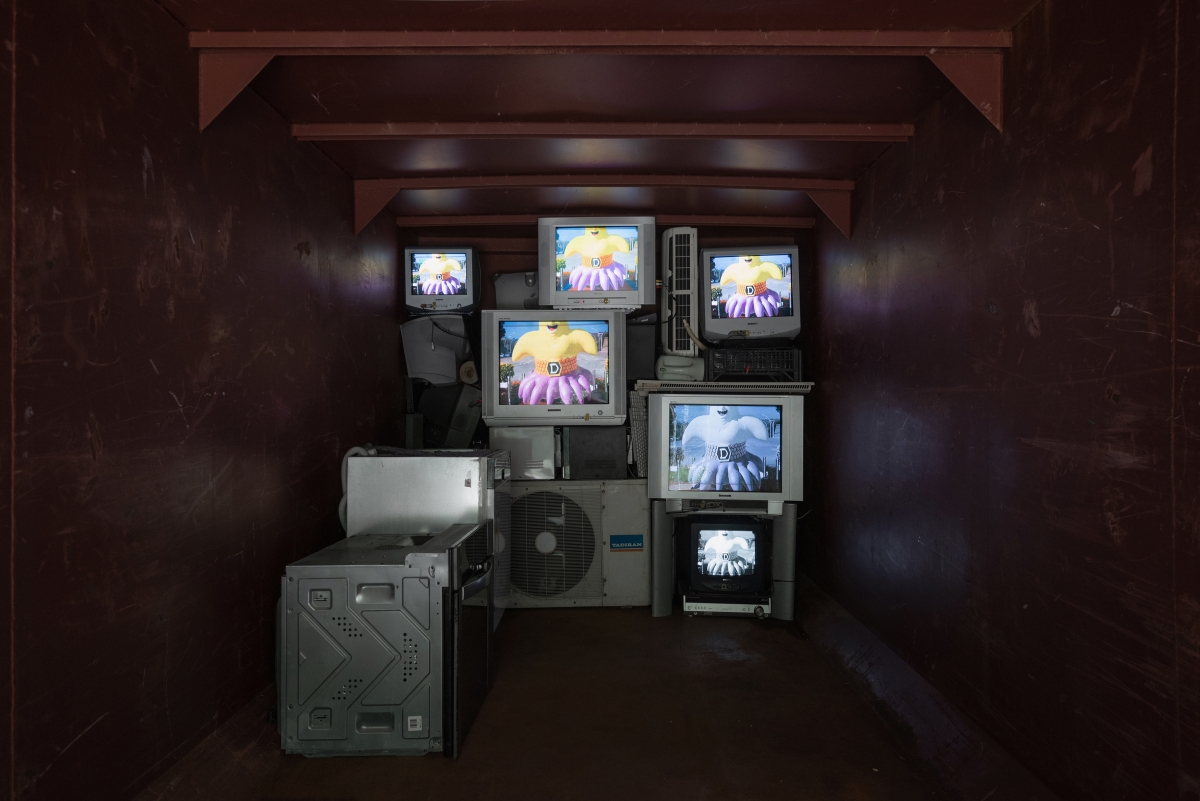
Tomasz Kobialka, coup d’état, 2023, multi-channel video installation, 01:56. Photo by Lukas Mykolaitis

Marija Olšauskaitė, Oversee, 2018 – ongoing, glass, metal, mixed media. Photo by Lukas Mykolaitis
Speaking of capitalism, a Dollarmite alien with a controversial history dances on the TV screens of Tomasz Kobialka’s work in a container in a waste collection site. For 90 years it has operated in Australia as a means of getting primary school children used to the banking system, turning them into consumers for life. The alien is a frighteningly bulging octopus-like creature that dances to music which is so etched in my memory that when I see pictures of the piece on my phone I hear it again and can’t stop. Behind the dancing alien is an image from the overthrow of the democratically elected government in Myanmar in 2021, inadvertently captured by an aerobics instructor filming a class in front of the parliament. Strong political contexts intertwined with surprises caught on camera are also evident in Fox Maxy’s work at the Nida Art Colony. In the diary-like video work, we see fast-moving images of fragments of Fox Mary’s daily life, interwoven with found footage and anti-colonial Native American activism. The captions that accompany the images, made up of truncated word endings and Internet language, create a distance from the work, as if I were just reading a tweet; but on the other hand, they are reminiscent of personal messages that make me feel too close.
Obsession could also appear on a page called ‘collecting’. I thought about this while watching Marija Olšauskaitė’s glass glistening in the sun on the site, collected at the closed Red Sunrise glass factory in Vilnius, and listening to Edvinas Grin and Egija Inzule read lines during the opening which the artist and activist Zoe Leonard collected from postcards at the Niagara Falls. The words ‘We are having the time of our lives’, ‘If only you were here’, and the like, reflect in the glass and merge these two materially disparate works at the waste collection site/NAC exhibition space into a phantom stained-glass window that evokes nostalgia for places I haven’t been to, for people I haven’t met, and don’t even know if they exist. But the second the knowledge pops into your head, it becomes uninteresting: the mystery possesses you, inviting you to find out; but it’s important to keep the revelation at a distance.

Nijolė Vilutytė, Sketches for artworks in public architectural spaces, 1972–1990, detail, drawings on tracing paper. Photo by Lukas Mykolaitis
This exhibition is great for observing the winds, one of the most moving features of ‘Obsession’, revealing the geeky side of the curator that I mentioned at the beginning. It’s curious to see how winds from different times intertwine and complement each other. The small ghostly translucent drawings on display at the Nida Art Colony hide stories told by Nijolė Vilutytė, who has been working as a painter and monumental artist for several decades. It is hard not to admire her genuine enthusiasm, which those who attended the opening of the exhibition were lucky enough to see and hear. The curator’s words, indicative of her admiration for artists obsessed with their own practice, were revealed in these moments in the most graceful and sincere way. Nijolė’s stories about the fresco-sgraffito technique, geometric rhythms and raging lines stirred the imagination, which in turn moved the artist’s sketches, hinting at the buildings and the spaces they once occupied.
We can also feel in the waste collection part of the exhibition the gusts of different generations. They are most active in Mykolas Valantinas’ work, created together with the woodcarver Mečislovas Ežerskis, whose life and work Valantinas has documented for many years. As we approach the fridge, we see wooden sticks with the bodies and heads of unnamed creatures peering out from behind the glass. Although they are distant in terms of materiality and time from the contemporary aesthetic of Edgy Valantinas, the works of both artists share a similar devilishness. It accommodates multi-layered questions of time, craft, skill and heritage, and, of course, obsession, a supernatural force that grows stronger with each piece, and, in this case, with each meeting. Folk artefacts, accustomed to the warmth of the maker’s hands, appear alongside synthetic images interpreted by artificial intelligence, without obstructing or competing with each other; it’s more like learning, gentle repetition, moving forward in time leaning towards experience.
Weather is a chrestomatic example of small talk, which in Neringa turns into the first, middle and last sentence, and sometimes even the topic of the day. Together with the weather, the economy, moods, expectations and stories are exchanged here, and they were captured by Miglė Vyčinaitė and landed in the exhibition space of the Nida Art Colony. The artist’s constructions, made from pieces of Neringa municipality lamps, playground elements and recycled fabrics, beckon with the potential ability to predict the weather and the wind direction, and to successfully organise ourselves according to them. I remember the lines by Eliot Weinberger on characteristics of the wind: ‘There are “proper” winds and “evil” or “empty” winds: winds that blew from the right direction at the right time, and those that did not, causing sickness or chaos, for, it was said, the hundred diseases arose from the wind, and entered the 84,00 holes of the body, the acupuncture points, just as it blew through the hollows of the earth.’ Perhaps the weather is a creature we judge first by its behaviour and appearance. As the climate changes and becomes more volatile, it is becoming more and more difficult to predict its movements, and we can no longer see its future. We are playing a dangerous game, and we can only hope that the sentinels we have built will protect our cities.
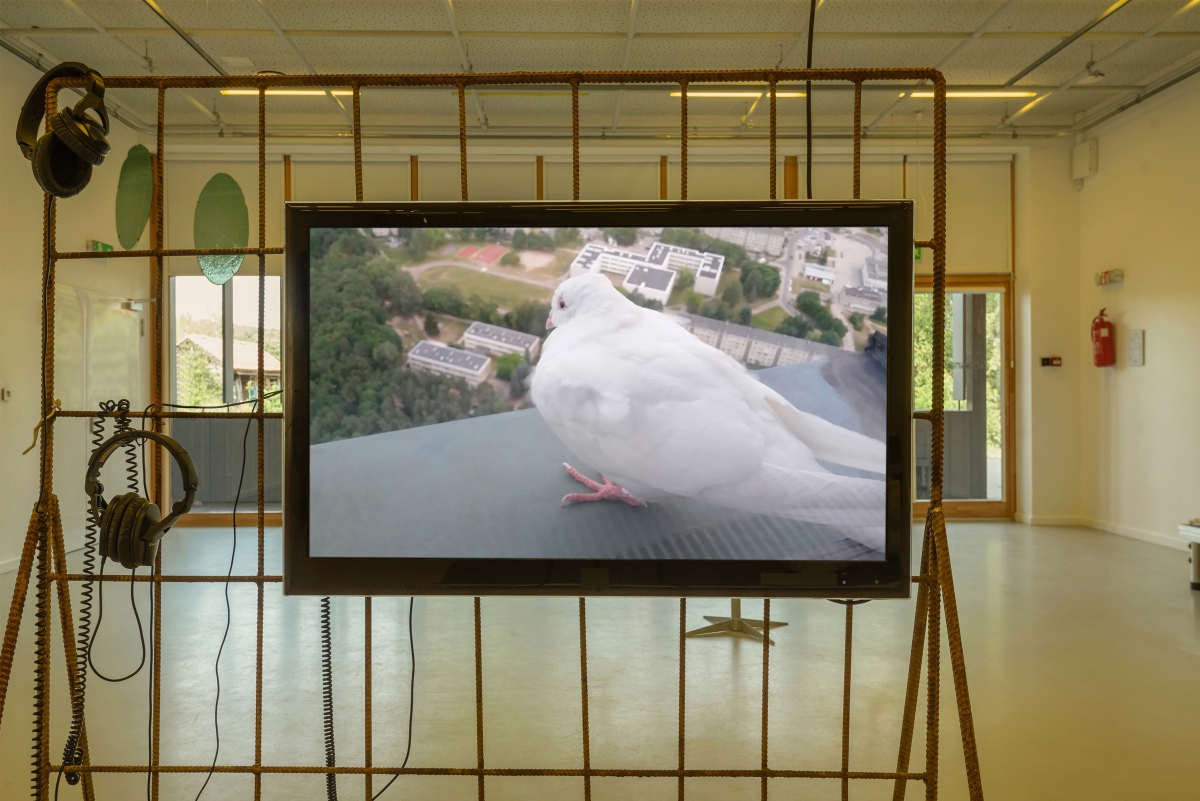
Felix Kalmenson, The Second Opinion, 2016–2019, video, 24:50. Photo by Lukas Mykolaitis
The suspicious search for signs by walking city streets and people’s experiences is also an obsession in Felix Kalmenson’s documentary work. The artist embarks on a journey through the historical memory of the Jews by collecting signs of resistance in Lithuanian towns. Stones, as the curator writes, become increasingly suspicious in the light of the fact that fragments of Jewish tombstones were used in building facades and mosaics. By combining the observation of spaces with the living memory of survivors of the Vilnius ghetto, Felix does not look for a definitive conclusion and generalisations, but rather opens the door to questions: how do we preserve each other’s memory, and in what archives do we keep our attentiveness?
Stray dogs that are no longer obsessed with their owners are unlikely to fall into the dopamine-driven Instagram traffic. These dogs can be seen in Annika Eriksson’s video in one of the buildings of a waste collection site where people can pick up or leave things they no longer need. The dogs on the screen, roaming among tables, cupboards, umbrellas and children’s car seats, bear stories of care and indifference, of living together and in total alienation, of taking uncomfortable bodies to remote places, and the sense of smell to help them return.
Before heading home, I stopped by a space bathed in yellowish light that reminded me of yellow vests and sunsets. I leave the exhibition, and with it a place with which I have shared dreams for a couple of nights. I feel pleasantly obsessed. I will be back.
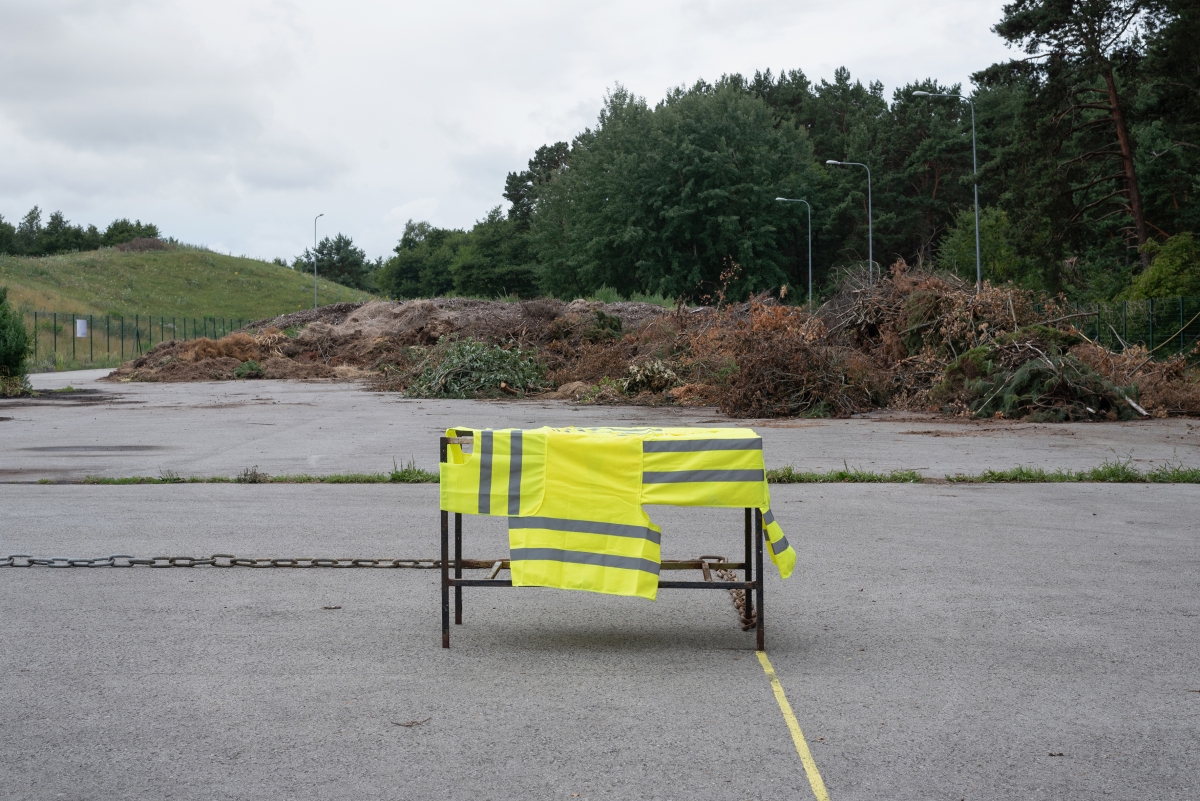
Case, Sideworks: Nida, Lithuania, 2023 – ongoing, detail, installation. Photo by Lukas Mykolaitis
